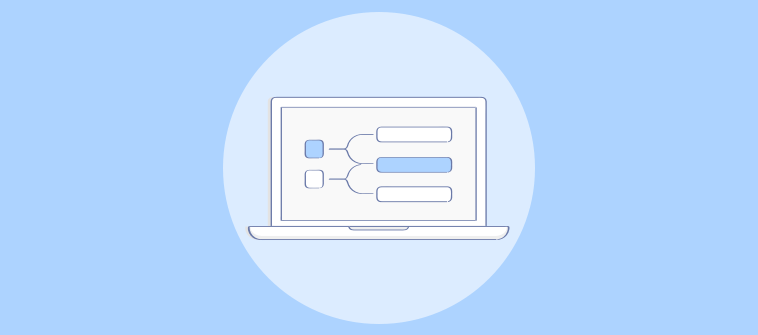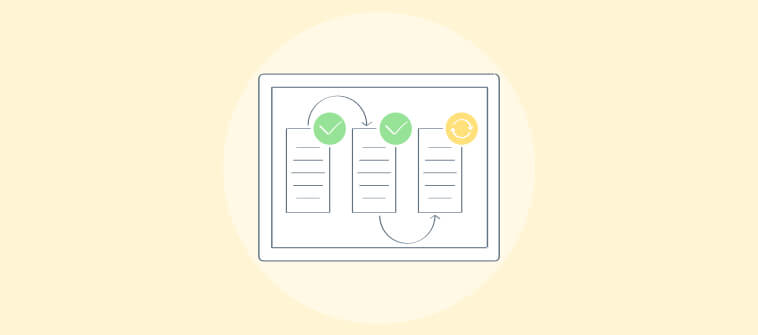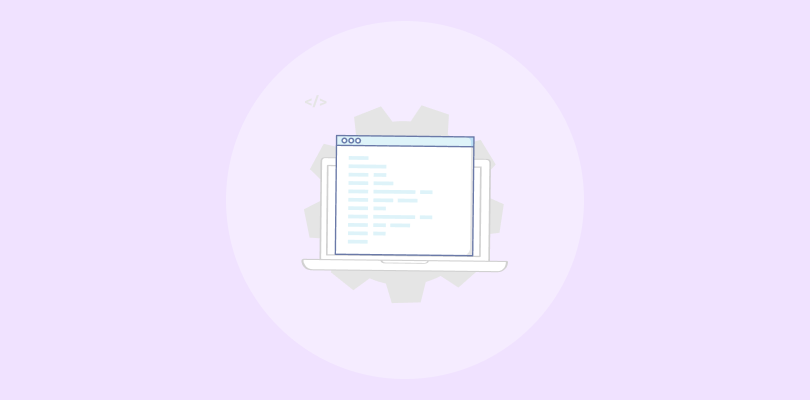Gantt Chart make tracking project progress much easier. But did you know that the use cases of these Gantt Chart Examples expand to multiple departments and not just project management?
You’d be surprised to know that I’ve got more than a dozen practical examples of these charts that can be applied in real life. Already curious?
Let’s hop right into the blog.
What Is a Gantt Chart?
“A Gantt chart is defined as a graphical representation of activity against time; it helps project professionals monitor progress.”
– Association for Project Management (APM)
Usually, it’s a bar chart showing a project’s schedule. It displays the project’s tasks, milestones, and dependencies along a horizontal timeline. Each task is represented by a horizontal bar that shows its start and end dates, duration, and completion percentage.
You can use different colors to show each task’s priority, status, or category. You can create a Gantt chart using dedicated project management software like ProProfs Project.
You can check this short video for a clearer understanding –
Watch: What Is Gantt Chart & Why Is It Important?
15 Powerful Examples of Gantt Chart
Project managers today consider Gantt charts more powerful than just a real-time progress tracker. I gathered input from HR heads, team leads, and project managers to create a list of the 15 best examples of Gantt charts.
Check them out below.
1. Project Management
Project management is the most common application of Gantt charts.
It is an excellent way to break down the work into manageable subtasks, assign responsibilities, and track progress, especially when you have a lot of tasks and dependencies.
In the image below, the timeline depicts the primary and crucial project information:
- The project’s name
- Start and end date of the project
- Tasks/subtasks and their duration
- Task dependency
- Workload
The timeline view visually represents the project, making planning and allocating resources easier. The dependencies and milestones help you identify critical path tasks and potential bottlenecks and adjust your schedule accordingly.
2. Human Resource
As a human resource (HR) professional, you understand how there are so many things on your plate, like –
- Assessing current staff requirements
- Employee onboarding
- Recruitment process
- Employee offboarding
- Payroll management
- Managing/updating company policies
- Maintaining employees’ records
- Taking care of employee training and development
Gantt chart templates for HR track candidate interviews, onboarding, training, and more. It can provide an overview of the recruitment process, including the timelines for candidate sourcing, interviewing, and hiring.
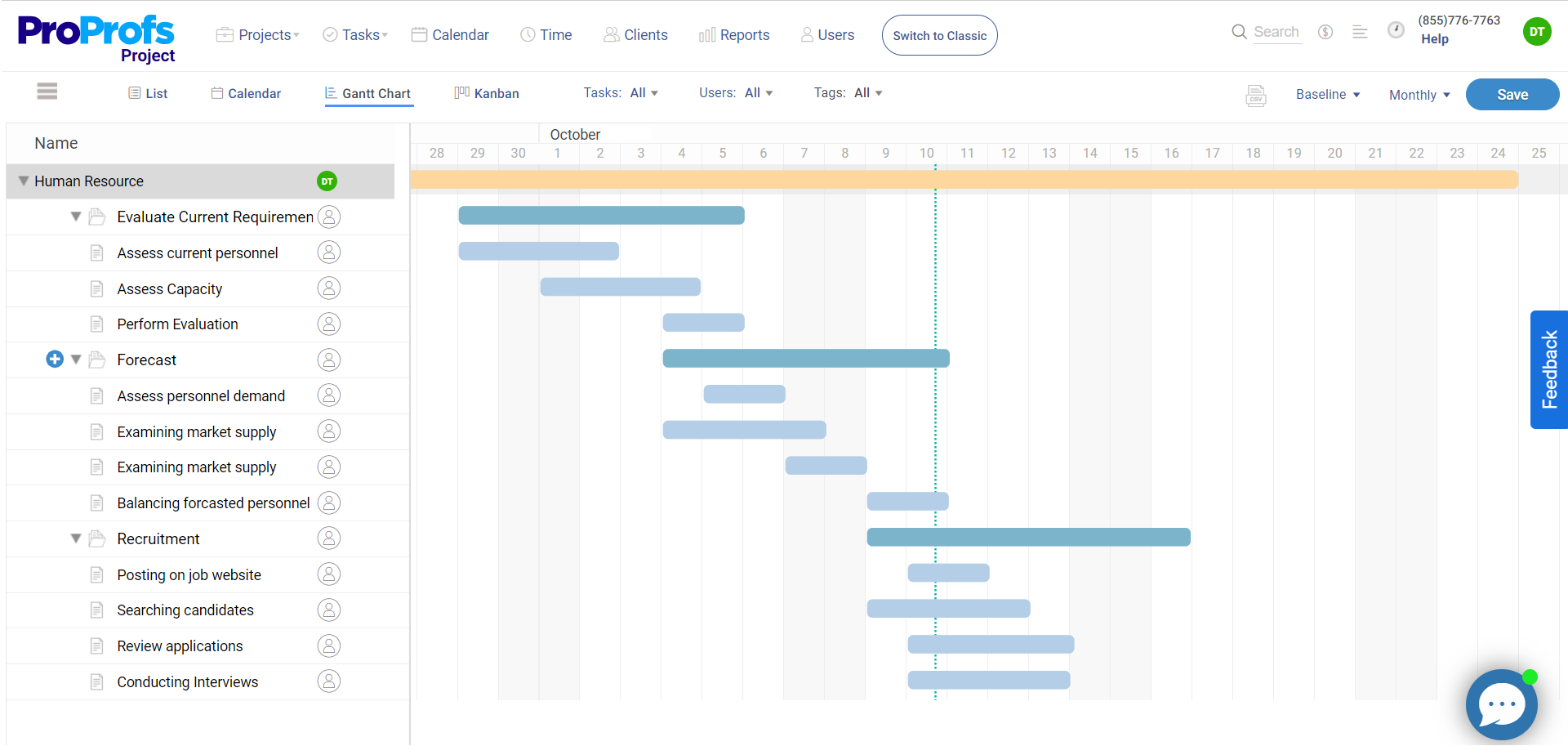
For instance, a Gantt chart can display the sequential steps in the hiring process, from posting job ads to conducting interviews and making offers – even making managing remote candidates

3. Business Plan
For budding entrepreneurs, creating a business plan involves numerous moving parts, from market research to financial forecasting.
A Gantt chart can break down the monumental task of launching a business into manageable pieces. It could outline the journey from conceptualization, securing funding, and product development to market entry, helping you track progress against milestones and adjust plans as the business environment changes.
For instance, in the below example of the Gantt Chart, you can see that before researching the market and competitors, you need to define the business vision and perform a SWOT analysis.
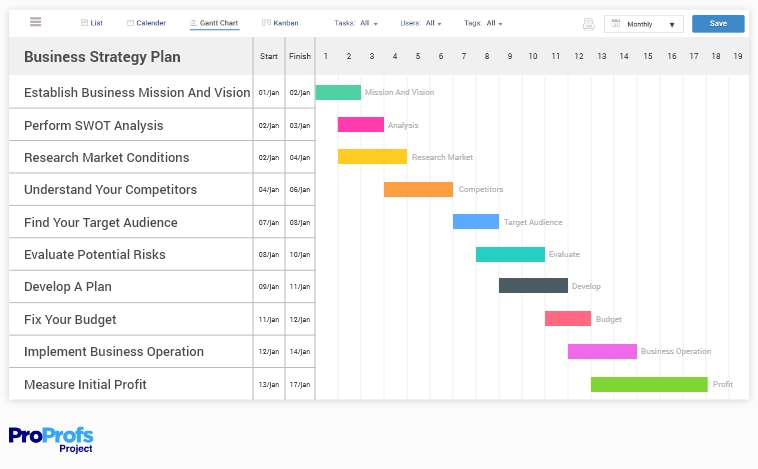
Read More: SWOT Analysis | A Way to Boost Project Success Rate
4. Sales Process
Working as a sales representative involves various challenges – cold calling, contacting potential customers, making follow-up calls, delivering sales presentations, sending emails, and conducting video conferences. It’s a demanding job.
Losing track of any of these can derail the entire team. But luckily, with Gantt charts, that won’t happen.
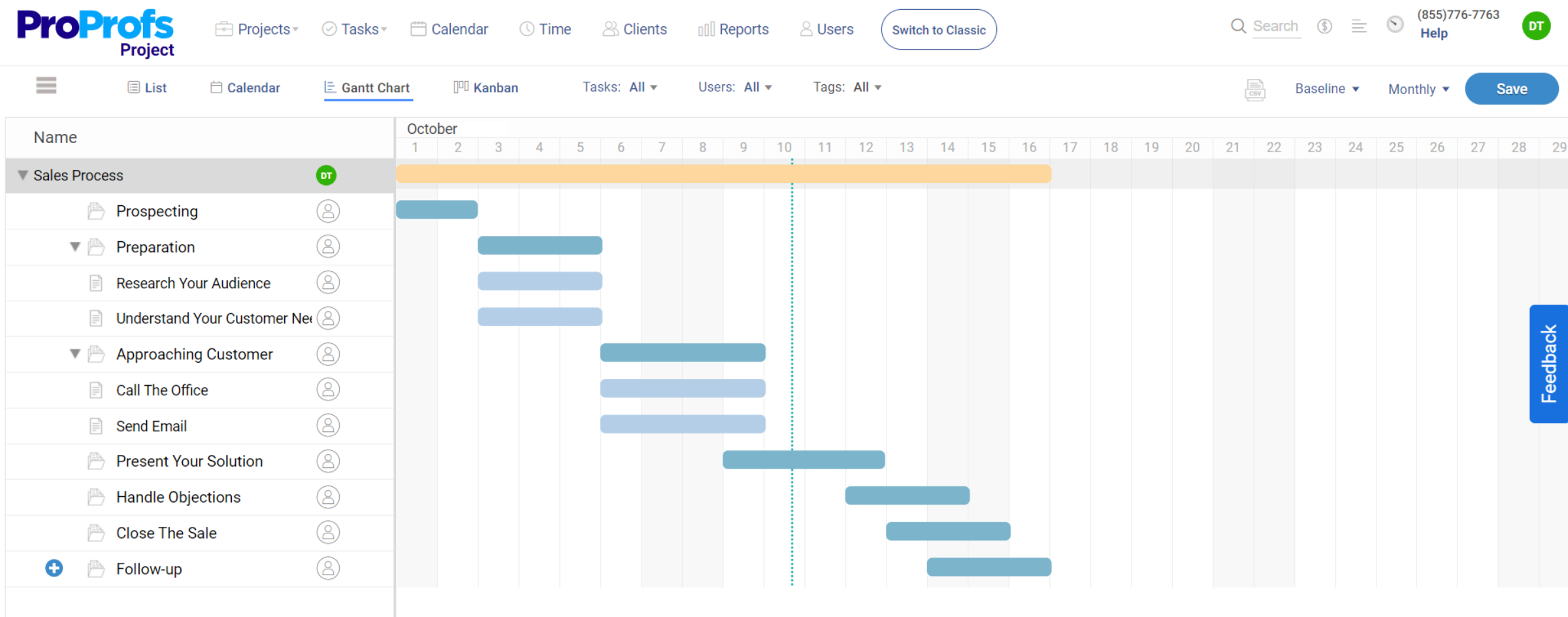
Sales teams can use Gantt charts to map out the sales cycle for key accounts, from initial contact through negotiation, closing, and post-sale follow-up. It helps identify potential bottlenecks, adjust resources, and optimize the sales funnel by monitoring lead conversion rates, sales targets, and other critical KPIs.
Also Read: Project Management KPIs to Track in 2024
5. Marketing
In marketing, Gantt chart examples are not that common. But in reality, it’s invaluable for planning campaigns across different channels.
It can help you coordinate the launch of a new advertising campaign, ensuring that creative development, media buying, and campaign analysis are completed in a timely and synchronized manner.
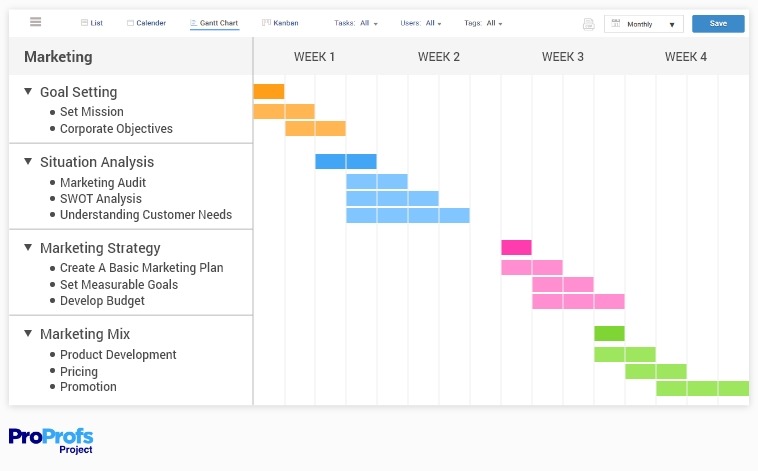
Gantt charts also let you visualize the overlap between tasks such as content creation, ad buying, and public relations efforts – ensuring that all elements of a campaign are coordinated and executed on time.
Read More: Marketing Project Management: The Ultimate Guide 2024
6. Product Management
For product managers, Gantt charts provide a visual roadmap for product development, from ideation through design, testing, and launch. It details phases such as market research, prototype development, user testing, and production. Such a visual overview of the product development lifecycle helps you easily allocate resources, set milestones, and track progress.
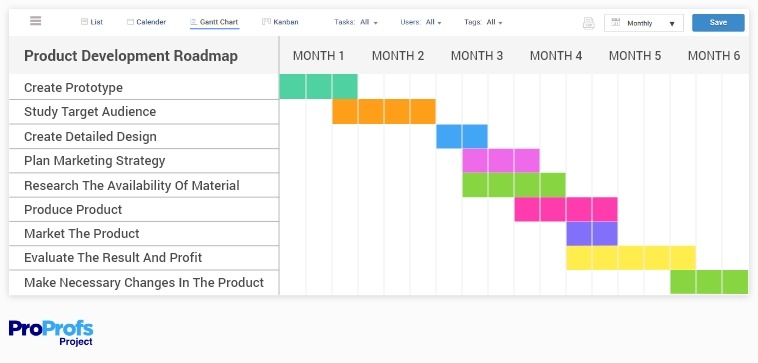
Read More: 14 Best Product Roadmap Software to Streamline Project Management
7. Media
Media and publishing projects, such as the production of a film, magazine, or digital content series, can be intricately planned with Gantt charts with Gantt chart examples. These charts help schedule and track various stages of content creation, editing, and distribution – ensuring that deadlines are met and content is released as planned.
It’s particularly useful in managing cross-functional teams that include writers, designers, and marketers – providing a common timeline that syncs everyone’s efforts toward the timely completion of media content.
8. Construction
Construction projects are complex, involving numerous subcontractors, regulatory approvals, and material deliveries. Can a Gantt chart help here? You bet it does.
With Gantt charts, you can break down the project into phases such as design, permitting, construction, and inspection – offering a clear timeline for each. You can also highlight dependencies, such as the need to complete the foundation before framing begins.

This level of organization is critical for keeping construction projects on schedule and within budget.
Looking for construction project management software solutions?
9. Social Media
Being part of a social media team is not for the faint-hearted (brutally honest review).
You have to manage posts, create content calendars, track campaign launches, check why engagement rates are falling, and more. But all this chaos can be silenced (to some extent) when you maintain a consistent posting schedule across platforms. How?
Well, social media managers say Gantt charts greatly help them in this.

Using Gantt charts, you can plan posts and campaigns across different platforms, ensuring a strategic approach to content delivery. It also aids in allocating resources for content production and monitoring, optimizing the impact of social media efforts.
10. Event Planning
Event planning is an intricate tale of logistics, from venue booking to vendor coordination and guest management.
A Gantt chart provides event planners with a visual checklist of every task and deadline, ensuring nothing is overlooked. Whether a corporate conference or a charity gala, the chart helps manage the myriad details, guaranteeing a successful event.
For example, in the image given below, you can see that with the help of a Gantt chart, the event is divided into numerous tasks like budgeting, setting dates, and organizing decorations.
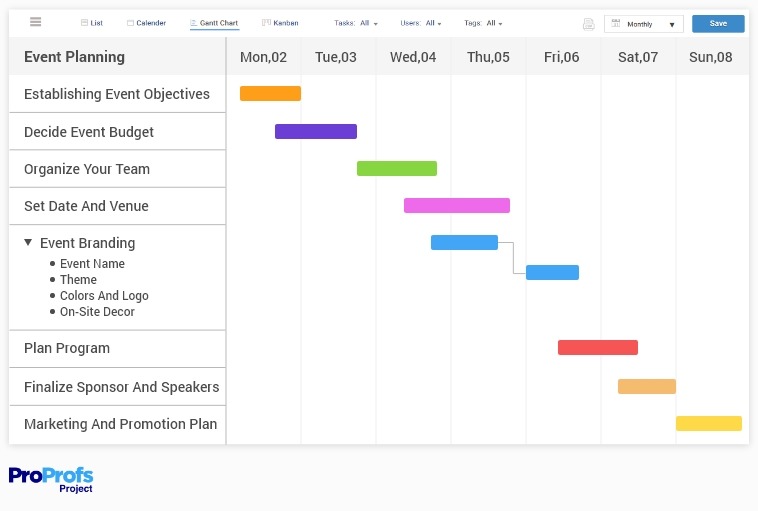
11. Consultants
If you are a consultant working on client projects, Gantt charts can help you outline project phases, deliverables, and deadlines – providing a clear roadmap for the client.
This helps communicate the project plan clearly to clients, setting realistic expectations for project completion. It also enables you to juggle multiple client projects efficiently, ensuring each project receives the attention it needs without compromising quality or timelines.
12. Design Project
A Gantt Chart helps track creative processes, review cycles, and implementation stages in creative projects such as website design or branding campaigns. Most tasks in these projects are interdependent.
For instance, if you’re designing a new website, you’ll most likely follow a well-established procedure:
- Create a wireframe for the user interface
- Make a mockup in Photoshop
- Create a webpage
- Test Website
With the help of a Gantt chart, your design team can track all these steps in one place. Here’s an example –
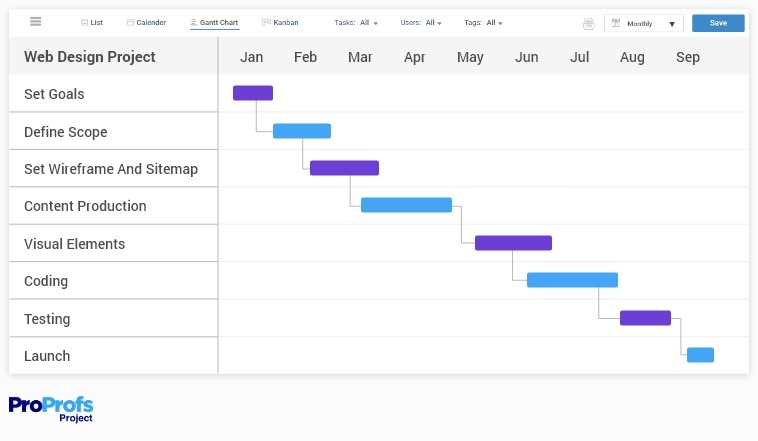
People also read - Web Design Project Management in 2024: The Ultimate Guide
13. Mobile App Development
Statista says – “In 2025, the number of mobile users worldwide is projected to reach 7.49 billion.”
This shows how essential it is to create a mobile app for almost all businesses. Using a Gantt chart, you can plan out all the steps needed to develop your app. It provides a visual representation of the agile development process, including development sprints, feature implementation, testing, and launch.
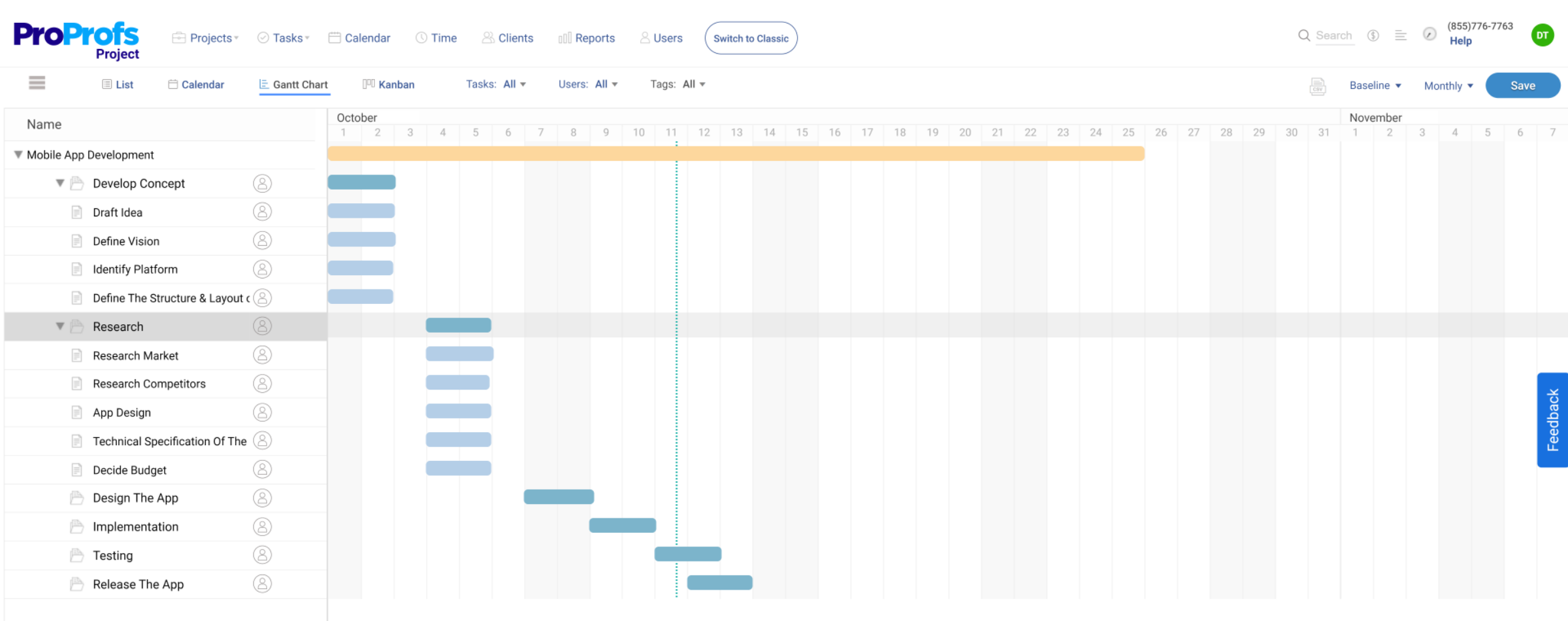
It also boosts your likelihood of finishing each task accurately and efficiently. After all, the goal is to ensure a successful app launch, and this method helps you achieve that goal.
Suggested read: 6 Reasons to Opt for Agile Methodology for Mobile App Development
14. Email Marketing
Much like social media, email marketing requires robust efforts to plan and execute campaigns efficiently. There’s a lot to track – which content is performing well, which is not, dates, times, contacts, subjects, and more.
The idea to use a Gantt chart here is to remain on top of everything. Otherwise, failing to monitor all email-related tasks and contacts could result in missed sales opportunities and lost valuable connections and leads…something like this –
15. Software Development
Let’s be honest about this: Gantt charts are a dream come true for software development teams. Why?
Well, these charts facilitate the tracking of version releases, feature developments, testing cycles, and bug-fixing efforts – aligning the development team and stakeholders around a common timeline.
Using Gantt Chart in software development projects, you can oversee –
- Project management tasks
- Planning of activities
- Development
- Implementation
- Testing
- Deployment and maintenance
Read More: Agile Software Development Life Cycle (Ultimate Guide 2024)
What Are the Parts of a Gantt Chart?
Understanding the key components that make up a Gantt chart can help you utilize them more effectively. Let’s check them out.
- Task List: This is a list of all the tasks or activities that need to be completed for the project.
- Milestones: Key milestones or major project checkpoints are marked on the chart as significant events.
- Dependencies: Arrows or lines are used to show task dependencies, indicating which tasks need to be completed before others can start.
- Timeline: A horizontal timeline represents the project duration, with each task displayed as a bar along the timeline.

Apart from the four main parts of a Gantt chart, there are also some other parts that you should know about –
- Bars: Each task is represented by a bar on the chart, with the length of the bar indicating the duration of the task.
- Duration: The length of each task bar represents the duration of that task, helping to visualize the time required for completion.
- Percent Complete: This indicates the progress or completion percentage of each task, providing an overview of the project’s progress.
- Resources: The Gantt chart can also show the allocation of resources to each task, whether it’s team members, equipment, or materials.
- Critical Path: The critical path is the sequence of tasks that determine the overall project duration. It is often highlighted or identified on the Gantt chart to help with project scheduling.
- Baseline: It refers to the initial plan or schedule against which the progress and deviations are measured. It helps track any changes and their impact on the project timeline.
- Notes or Comments: Gantt charts may include notes or comments section to provide additional information or details about specific tasks or milestones.
- Legend: A legend or key is usually included to explain the symbols or colors used in the chart, making it easier to understand and interpret.
How to Make a Gantt Chart?
Creating a Gantt chart is possible through Microsoft Excel, PowerPoint, or Word. However, the easiest way to create these is by using specialized Gantt chart tool. Here’s a step-by-step guide to help you get started –
- Access Your Project: Select the project for which you want to create a Gantt chart on your dashboard.
- Set Up Tasks and Milestones: Enter your project tasks, sub-tasks, and milestones, along with their start and end dates.
- Adjust Timelines: You can visually adjust the timelines of each task by dragging the edges of the bars in the Gantt chart.
- Identify Dependencies: Link tasks dependent on each other to see how changes in one task’s timeline affect others.
- Monitor Progress: The Gantt chart will help you track the progress of tasks, showing how much work is completed and what still needs to be done.
Read More: How to Make a Gantt Chart (Step-by-Step Guide for Beginners)
What Are the Advantages and disadvantages of Using Gantt Charts?
I know you’re probably wondering – Pros are okay, but why would there be cons of using Gantt charts? Don’t they have a lot of use cases?
Well, like any tool, even their are advantages and disadvantages of gantt charts. Even if the cons aren’t deal-breaking, it’s better to be aware. Here are some of the most common pros and cons –
Pros:
- High-Level Overview: They visually represent the project timeline, making it easier to understand the sequence and duration of tasks.
- Resource Management: Gantt charts help allocate resources effectively and manage time efficiently.
- Tracking Progress: They allow for real-time tasks, benchmarks, and workflow tracking.
- Illustrating Dependencies: They clearly show how tasks overlap and how the start of one task may depend on the completion of another.
Cons:
- Complexity: Gantt charts can become too complex and difficult to interpret as projects grow.
- Information Overload: Gantt charts can overwhelm you with too much information if poorly designed.
- Maintenance: They require constant updates to reflect the project’s true status, which can be time-consuming.
Who Uses Gantt Charts?
Gantt charts are a versatile project management tool used across various industries to plan, coordinate, and track progress. Here are some of the different departments that utilize Gantt charts in their day-to-day work:
- Consulting Agencies: Consultants use Gantt charts to manage client engagements, track deliverables, and ensure that projects stay on schedule.
- Engineering Firms: Gantt charts provide a clear overview of tasks, dependencies, and deadlines, enabling project managers to allocate resources and adjust plans.
- Software Development: Gantt charts help create project roadmaps, manage the software development life cycle, and track progress. They are useful for breaking down complex software projects into manageable tasks and visualizing the timeline of development activities.
- Event Planning: With Gantt charts, event planners get help in scheduling activities, assigning responsibilities, and ensuring that all aspects of the event are prepared in time.
- Human Resources: HR departments use Gantt charts to organize tasks related to recruitment, onboarding, training, and other HR initiatives.
- Marketing Teams: Gantt charts help in visualizing tasks, setting deadlines, and tracking the progress of marketing initiatives.
- Manufacturing: In manufacturing, Gantt charts are used to plan production schedules, track the manufacturing process, and ensure the timely delivery of products. They help map out the product development cycle and manage the workflow.
- Construction Firms: Gantt charts in construction help visualize project timelines, track the progress of tasks, and manage resources effectively.
Create Effective Gantt Charts That Reduce Your Workload
Gantt charts are undoubtedly an indispensable tool if you manage projects with multiple tasks, assignees, dependencies, etc. It can help you make scheduling, planning, and tracking projects easier than before.
But there’s a prerequisite – you must have reliable Gantt chart software.
That’s largely because creating these charts on spreadsheets or Word documents is a hassle. With a software solution, there’s hardly any sweat.
One such popular software that offers an intuitive Gantt chart maker is ProProfs Project. It’s an easy-to-use project management software you may have heard before. You can give it a test drive – it’s completely free, thanks to the freemium plan.
FAQs
What is a Gantt chart used for in project management?
A Gantt chart is used in project management to visualize project schedules. It shows tasks, their start and end dates, and dependencies, helping teams plan, track progress, and allocate resources effectively.
What are some of the best practices for creating an effective Gantt chart?
To create an effective Gantt chart, consider the following best practices –
1.Get a reliable Gantt chart software tool.
2.Define the project scope and break it down into manageable tasks.
3.Identify all necessary tasks and organize them in a logical sequence.
4.Set realistic start and end dates for each task, considering dependencies.
5.Assign tasks to team members with clear responsibilities.
6.Establish milestones for critical checkpoints throughout the project.
7.Monitor progress regularly and update the Gantt chart to reflect changes.
8.Communicate the Gantt chart with all stakeholders to ensure alignment and transparency.
Can I make a Gantt chart online?
For that, you will need a Gantt chart maker tool. Usually, all major project management software solutions like ProProfs Project have a tool that allows you to create Gantt charts and use them to track project progress.
What does Gantt stand for?
“Gantt” refers to Henry Gantt, an American mechanical engineer credited with developing the Gantt chart in the 1910s. A Gantt chart is a type of bar chart that represents a project schedule and is widely used in project management to track tasks and timelines.
FREE. All Features. FOREVER!
Try our Forever FREE account with all premium features!

